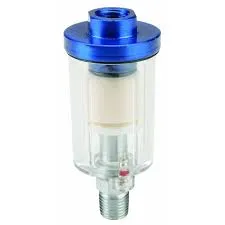Nov . 27, 2024 17:21 Back to list
Displacement Hydraulic Cylinder Solutions for Enhanced Performance and Efficiency
Understanding Displacement in Hydraulic Cylinder Products
Hydraulic cylinders are integral components in various industries, used widely for their ability to generate powerful and controlled movements. At the heart of understanding hydraulic cylinders is the concept of displacement, a fundamental parameter that defines the performance and efficiency of these devices. In this article, we will explore what displacement is in the context of hydraulic cylinders, its significance, and the various products available in the market.
What is Displacement?
Displacement in hydraulic cylinders refers to the volume of fluid that is moved by the cylinder as it extends and contracts. It is usually measured in cubic centimeters (cc) or cubic inches and is calculated based on the cylinder's bore (the inner diameter), stroke length (the distance the cylinder can move), and the geometry of the cylinder. The displacement directly correlates with the force output of the hydraulic cylinder, which is influenced by the hydraulic pressure applied to it.
The formula for calculating the displacement of a hydraulic cylinder is
\[ \text{Displacement} = \pi \times \left(\frac{\text{Bore}}{2}\right)^2 \times \text{Stroke} \]
This fundamental calculation is essential for engineers and designers to ensure that the hydraulic system performs optimally, whether it is for lifting, pushing, or controlling machinery.
Importance of Displacement
Understanding the displacement of hydraulic cylinders is critical for several reasons
1. Force Output Calculation Displacement is linked to the amount of work a hydraulic cylinder can perform. By knowing the displacement, engineers can calculate the force exerted by the cylinder using the formula
\[ \text{Force} = \text{Pressure} \times \text{Area} \]
where Area is derived from the displacement parameters.
displacement hydraulic cylinder products

2. System Efficiency Properly sized cylinders ensure that hydraulic systems operate efficiently without unnecessary energy losses. Mismatched displacement can lead to overworking the pump or inadequate power delivery to the actuator, resulting in increased wear and tear.
3. Application Suitability Different applications require different displacements. For instance, construction equipment such as excavators and bulldozers typically employ cylinders with varying displacements to manage different loads and tasks effectively.
Types of Displacement Hydraulic Cylinder Products
The market for hydraulic cylinders is diverse, catering to numerous applications with specialized requirements. Here are some common types of displacement hydraulic cylinder products
1. Single-Acting Cylinders These cylinders exert force in one direction, utilizing hydraulic fluid to extend. They rely on external force, such as gravity or a spring, to retract. Single-acting cylinders are often used in applications such as clamping and lifting.
2. Double-Acting Cylinders These can exert force in both directions, offering better control and efficiency in operations. They are commonly used in machinery where both extension and retraction are required, such as in construction equipment and manufacturing processes.
3. Telescoping Cylinders Featuring multiple nested stages, telescoping cylinders provide significant reach and greater displacement without the need for long stroke lengths. They are useful in applications requiring compact design, such as dump truck beds and aerial work platforms.
4. Rotary Hydraulic Actuators These are used for applications that require rotary motion rather than linear movement. They convert hydraulic fluid pressure into rotational force and are commonly found in robotics and automotive industries.
5. Custom Hydraulic Cylinders For specialized applications, manufacturers often produce custom hydraulic cylinders tailored to specific displacement needs. These cylinders consider unique operational requirements, ensuring optimal functionality.
Conclusion
Displacement is a crucial aspect of hydraulic cylinder functionality that influences system performance, force output, and operational efficiency. With a variety of products available in the market, ranging from single-acting to complex telescoping cylinders, it is essential for engineers and end-users to comprehend their specific displacement requirements. Understanding displacement not only enables the selection of the right hydraulic cylinder but also ensures that safety, efficiency, and productivity are maximized in various applications. As the industry continues to innovate, the role of hydraulic cylinders and their displacement will remain vital in driving advancements in technology and machinery operation.
-
Fork Lift Power Units - Hebei Shenghan | Efficiency, Reliability
NewsJul.13,2025
-
1.5-Ton Turbocharged Cylinder-Hebei Shenghan|Hydraulic Solution,Energy Efficiency
NewsJul.13,2025
-
Auto Hoist Power Units-Hebei Shenghan|Efficiency&Industrial Lifting
NewsJul.13,2025
-
Double Acting Power Units-Hebei Shenghan|Hydraulic Solutions,Industrial Efficiency
NewsJul.13,2025
-
1.5 Ton Lifting Cylinder 70/82-40-290-535 - High-Performance Hydraulic Solution | Hebei Shenghan
NewsJul.13,2025
-
Fork Lift Power Units - Hebei Shenghan | Efficiency&Reliability
NewsJul.13,2025
